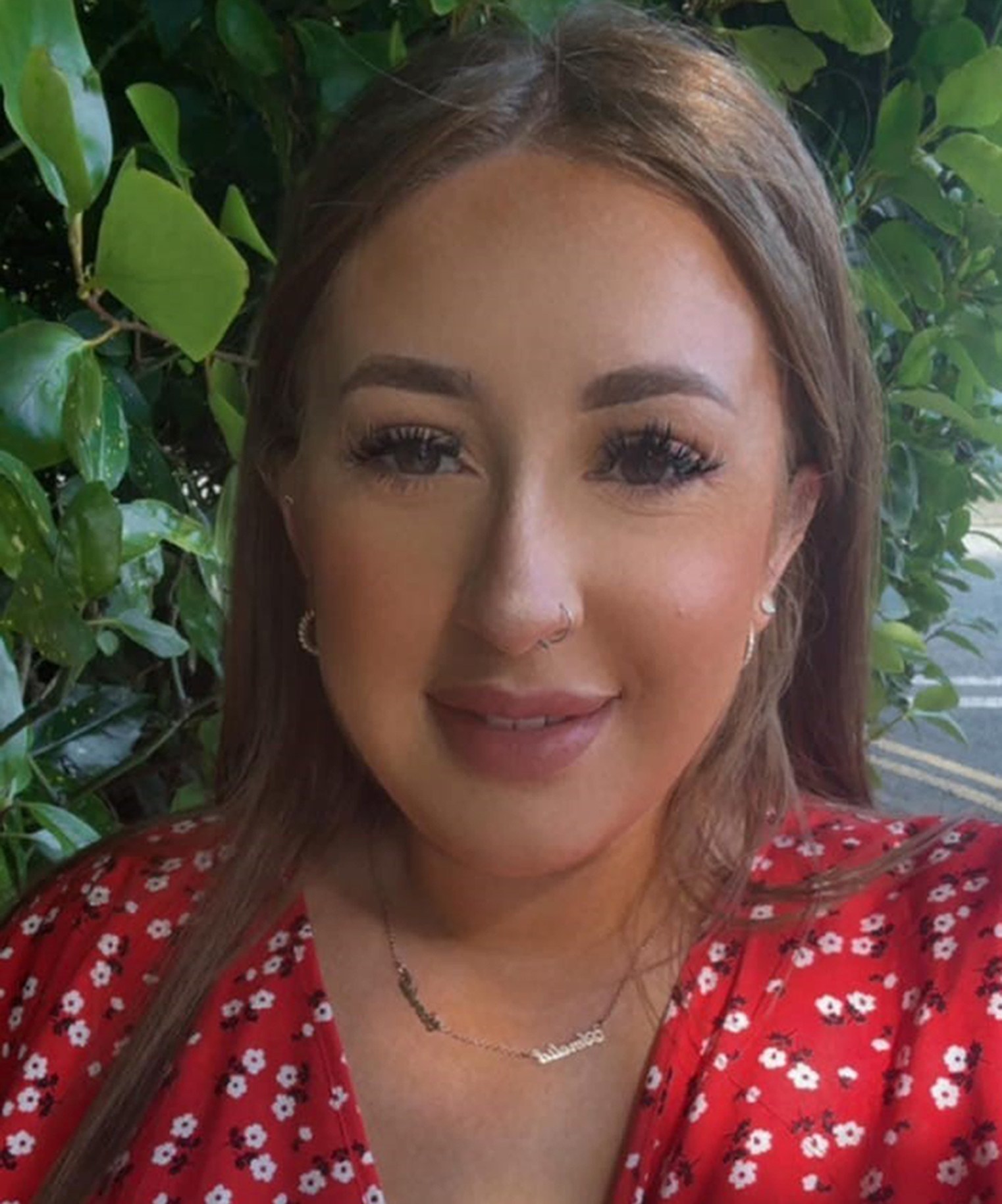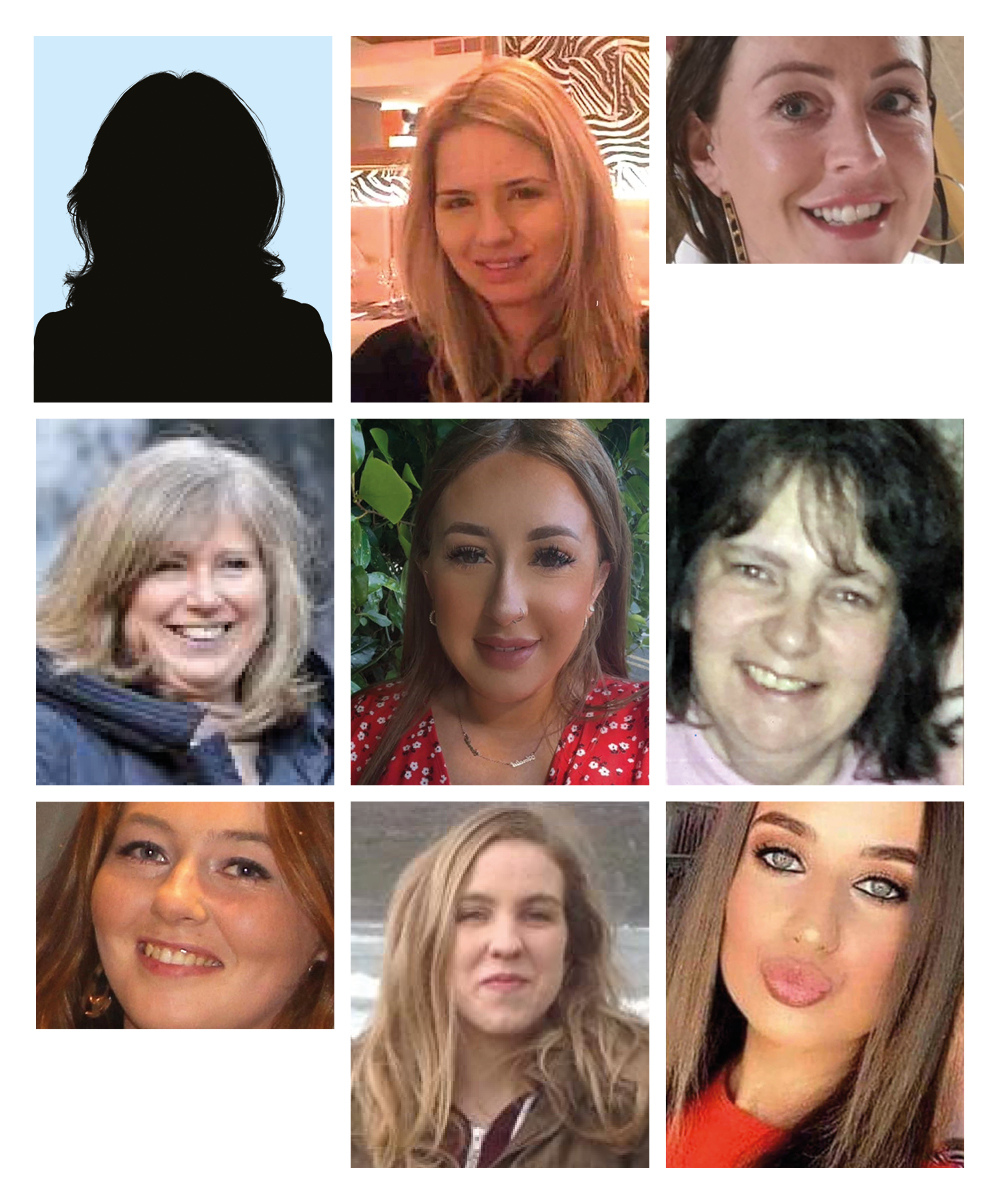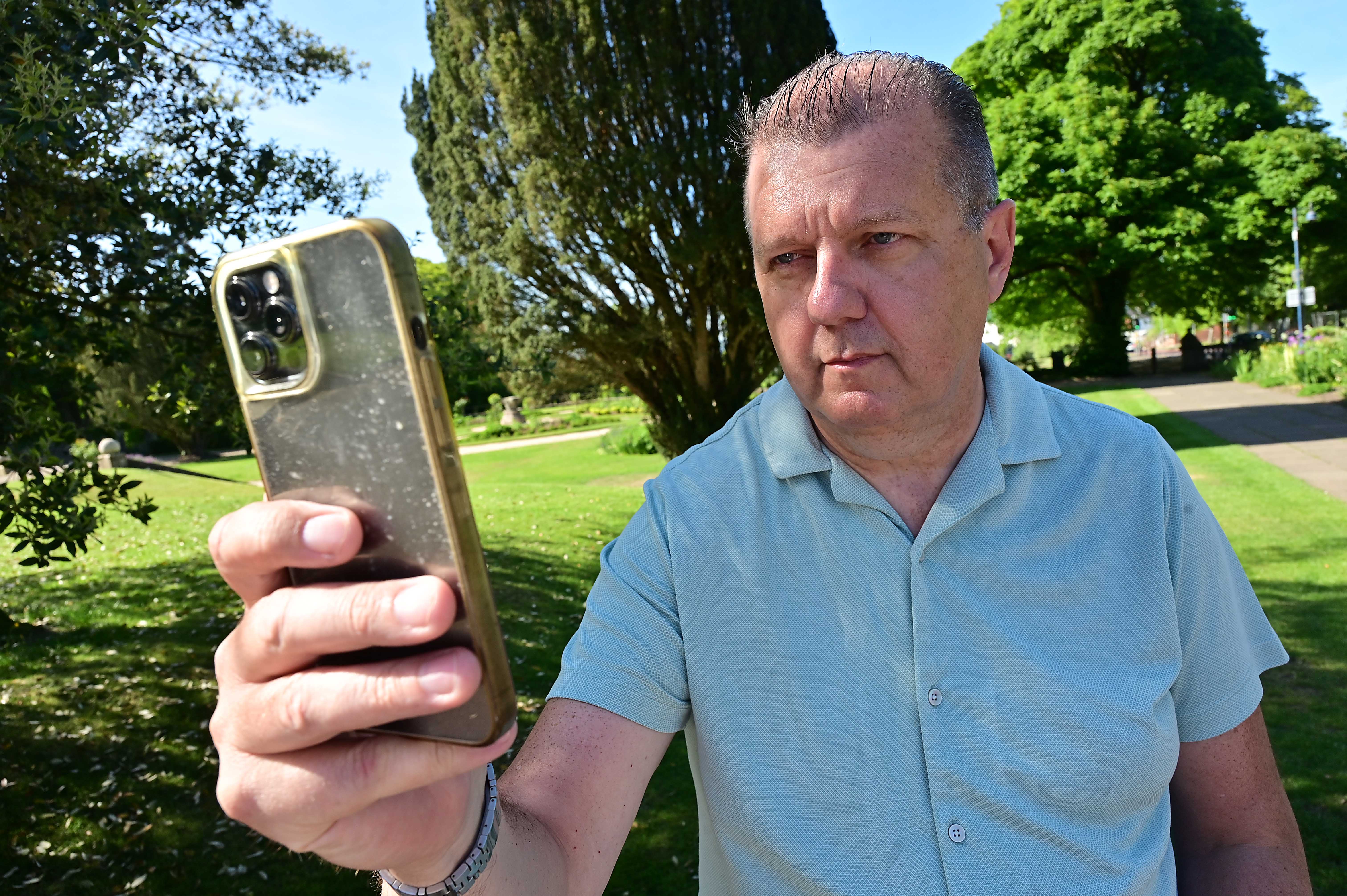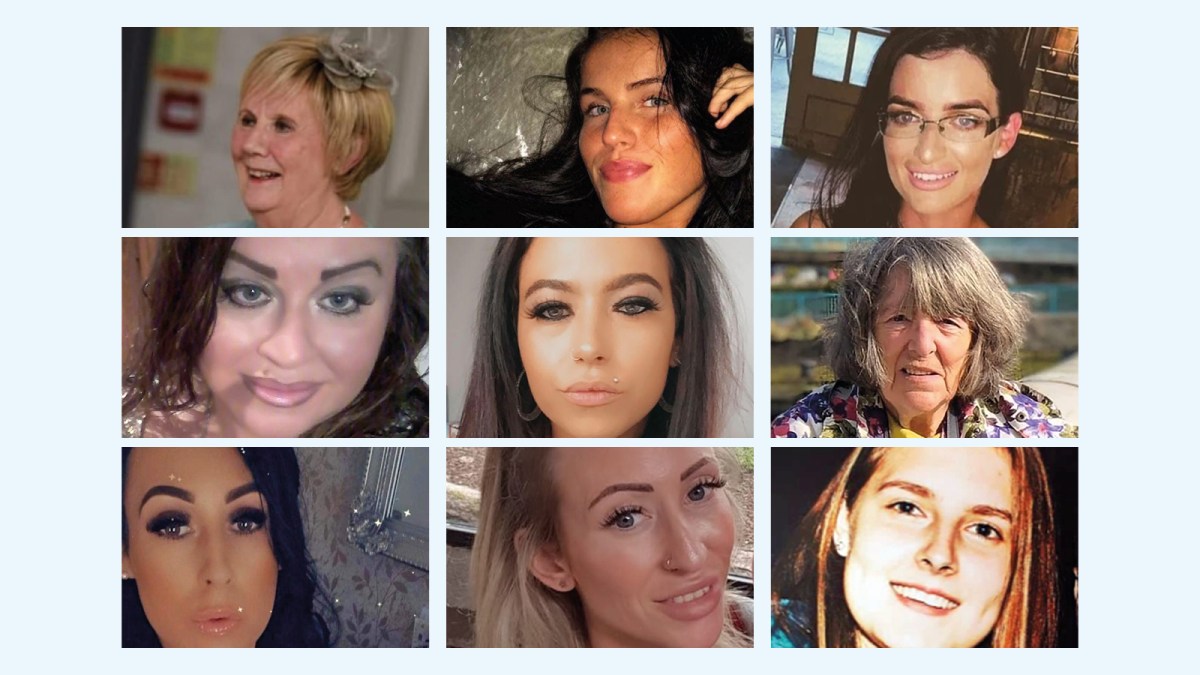In the late summer of last year, a cluster of killings pushed Northern Ireland ever closer to becoming the femicide capital of Europe.
Four women and a girl, a toddler, were killed within two months. Before the year was out eight were dead, including two in the same week.
The stark reality is that, north of the border, a woman’s own home can be the most dangerous place for her to be.
In a jurisdiction with a population of 1.9 million, 27 women have been killed since 2020. In the Republic, with a population two and a half times greater, 37 have been killed in the same period.
Last week a vigil was held for 27-year-old Sarah Montgomery from Co Down, whose death followed the Belfast killing three weeks earlier of Marie Green, 71.
As with Co Armagh’s Natalie McNally, who was killed in 2022, Montgomery had been pregnant. One week before her death she had been for an ultrasound scan. She was due to give birth to her third child next month, a brother for her daughters, aged five and seven.
McNally’s mother, Bernie, was among more than 500 people who attended the vigil in Donaghadee hours after a police cordon had been lifted at Montgomery’s home.

Hundreds of people gathered for a vigil after the death of Sarah Montgomery
JONATHAN MCCAMBRIDGE/PA
Many laid flowers in the evening sunshine outside the property where McNally had been found fatally wounded five days previously.
Her friend Ainslie White told of two little girls who would never meet their baby brother or see their mother again. On a packed yet silent street, she said Sarah and her unborn son, who was to be named Liam Arthur, were “in the arms of the angels now”.
Aaron Mouser, who got to know Montgomery while giving her self-defence classes, said: “She started off as a customer who became a friend.
“She was just so warm and friendly and very funny and she could throw a hell of a punch too. I asked her why she signed up and it was for social reasons, to lose a bit of weight, cardio, all of that.
“We became friends and met a couple of times when we were out for drinks, that sort of thing. And now all of a sudden I’m seeing her face on TV and she has been killed.”
Montgomery, whose parents Linda and Andrew are dead, was a fundraiser with the RNLI in the harbour town where her grandfather Arthur Arbuckle was a crew member.
She was found seriously injured and unconscious in her flat last Saturday, June 28, and died at the scene.
Montgomery’s funeral is due to take place in the town on Thursday.

Sarah Montgomery, 27, was due to give birth to her third child next month
PSNI/PA
Catherine McMinn, a charity campaigner, said the toxic legacy from recent history had played a part in making violence a routine feature of Northern Ireland society.
“Our past was founded on coercive control,” she said, arguing that aggressive male role models and desensitisation to brutality perpetuated an enduring problem, combined now with the at-times “negative influence” of social media.
“The bit that we can’t say out loud is the fact that there appears to still be a lack of understanding, even with all the vital campaigning and information-sharing around domestic abuse, among our decision-makers, the people we rely upon to bring change. I find that kind of scary.”
McMinn told of a facial surgeon who, after resetting a woman’s jaw for the third time, got frustrated after raising concerns that his patient “could be killed” but had no choice but to see her return to her abuser.
“What if we were seeing children rocking up to nursery school with the injuries that some of these women presented to the hospitals with?” she said. “Would things move a lot quicker? I think they would. So why don’t they?
• It’s time for men to speak out about the savagery against women
“We definitely need more education around it. We should have more people going into schools and talking to potential parents or parents … going into ophthalmology and dentistry schools, medical schools, any role that is front line where people interact face to face.”
She emphasised the need to equip professionals to recognise the often-missed signs of physical abuse — such as haemorrhaging in the eyes due to non- fatal strangulation — and provide information to help them.
She said: “There should be a domestic abuse specialist in every accident and emergency department in Northern Ireland so women can be intercepted before they slip through the net.
“But what is happening is that budgets are being cut again when what is delivered on the front line should be considered the next essential services after fire, police, ambulance.

Clockwise from top left: Ludmila Poletelova, 61; Emma Jane McParland, 39; Marie Green, 71; Karen Cummings, 40; silhouette represents Monserrat Elias, 66; Una Noone, 77; Alesia Nazarova, 37; Rachel Simpson, 43; Alyson Nelson, 64
“Support services are already in existence, doing essential work, but they are hampered by the constant concerns around funding and perhaps also with the concerns that they are not being listened to by decision-makers.”
Worryingly, she said that Northern Ireland’s grim tally of 27 victims in five years might be inaccurate as questions persisted around several women’s suicides.
McMinn pointed to the death in 2020 of 21-year-old showjumper Katie Simpson in Derry. She was believed by police to have hanged herself before her killer Jonathan Creswell’s violent sexual past was highlighted.
That led to the discovery of his extensive coercive control and her staged suicide.
McMinn said: “It had all been missed and Creswell nearly got away with it. How many other cases are there like that?”
Linda Dillon, a Sinn Fein MLA for Mid Ulster who is pressing for reform in light of femicide figures, said that she was confident that a new focus by police and the wider system would bear fruit.
She said: “It is a priority for policing but it’s not all about the police. It’s about getting our education department, our health department and our communities departments prioritising it in the same way.”
Dillon told of a case in which a woman came under coercive control while developing a drug habit, with narcotics introduced by her partner. He then sought to use her addiction to remove her from her children.
She said police had noted all the circumstances and, in presenting them to relevant agencies, changed the direction of the process.
Dillon said: “That wouldn’t have happened before. They are getting the training. They are not always getting it right but the message is getting through.”

Clockwise from top left: silhouette represents Sophie Watson, 57; Natasha Melendez, 32; Katie Brankin, 37; Katrina Rainey, 53; Chloe Mitchell, 21; Natalie McNally, 32; Katie Simpson, 21; Susan Baird, 60; Sarah Montgomery, 27
She said the Northern Ireland executive’s 2024 Ending Violence Against Women and Girls strategy, a seven-year framework to address gender-based violence, aimed to close the gaps but that there was no room for complacency.
To combat coercive control, which too often escalates to violence and murder, one surprising yet promising way ahead may lie in the growing practice of animal fostering.
Statistics show that in about half of cases, abusers use violence or its threat against animals to stop their victims from seeking help.
While options around this have opened for women in the Republic and across Britain, Northern Ireland still offers nowhere to turn when it comes to ensuring safety for their pets, often trapping them in their homes.
Andrea Lynch, a vet and a domestic abuse survivor, has been working with the Links Group, a UK charity raising awareness about the connection between the abuse of people and animals, to help to plug that gap.
• Why I stopped running the day Ashling Murphy died
She told of “strong evidence” that most women with pets in the home “will not leave the abuser, or delay leaving their abuser, because they’ve nowhere to take their animal. We have examples of where the woman has been killed as a result of turning down a place in refuge because she couldn’t take her pet.”
She said much more needed to be done, with figures in Great Britain revealing that last year 1,000 survivors were helped to flee via four charities that fostered 1,500 animals. Lynch said that when a perpetrator’s ability to find the pet was shut down, their route to finding their victim was dramatically reduced.
She said: “It’s important that people understand the lengths the perpetrator will go to. Some UK police forces classify women as high risk if animal abuse is reported in the home. This kind of multi-agency working is the way forward. It can save lives.”
Other options include exploring technological advances that can boost the safety of potential victims in the home or on the street.
New AI software developed by a Northern Ireland man, who was inspired by the death of a relative, is among options being considered. Sean Brown’s Safe Connected City project has sparked early exploratory interest from stakeholders including public transport company Translink, Derry City Centre Initiative, politicians and others, and may be trialled by Avon and Somerset police.

Sean Brown from Northern Ireland founded the camera solutions company Eyedrive
ARTHUR ALLISON/PACEMAKER PRESS
When a user is concerned they are being followed by a stranger or abuser, the app can direct them to the nearest registered facility, which could be a bus, taxi, shop or pub, via a network of beacons. From there it pinpoints the person’s exact location, can identify them on camera and monitors their situation while a manned control room offers options including calling in police. Video gathered could be used in court hearings.
The tech’s applications extend to facial recognition software in CCTV cameras which would flag up the approach of an individual who is bound by a restraining order or similar restriction.
Brown, who founded camera solutions company Eyedrive, said: “This can build an entire claims file within the app and that’s crucial for victims of abuse who need evidence for the police.”
Dillon, who has spoken to Brown, told of her interest in exploring technological advances. She said: “We need to think about everything that can be helpful and everybody should have an open mind.
• The latest twist in a 27-year unsolved Irish murder case
“We can do this: there is a big problem and we can really change things. But we need to keep having the conversations, speak up, educate and be honest about all this and stop cushioning things. Some people think I’m quite aggressive but there are difficult truths. All departments must see this as their responsibility and it starts with education.”
Mouser, Montgomery’s friend, agreed that the issue needed to be consistently highlighted and “discussed openly”. He said: “This should not be a taboo subject. Men need to hold other men accountable and say so when we think there might be a problem.
“I just really hope that things change and other people don’t have to see the faces of people they know on TV because they’ve died in this way.”
Zak Hughes, 28, of Ardglen Place, Belfast, appeared at Newtownards magistrates’ court last week charged with the murder of Sarah Montgomery. He is also charged with child destruction. No facts of the case were laid out and there was no application for bail.
Last month at Belfast magistrates’ court, Lewis Green, 31, of Shore Road, Belfast, was charged with the murder of his mother Marie.
Stephen McCullagh, 35, of Woodland Gardens, Lisburn, is expected to stand trial in November. He is charged with the murder of his partner, Natalie McNally.
